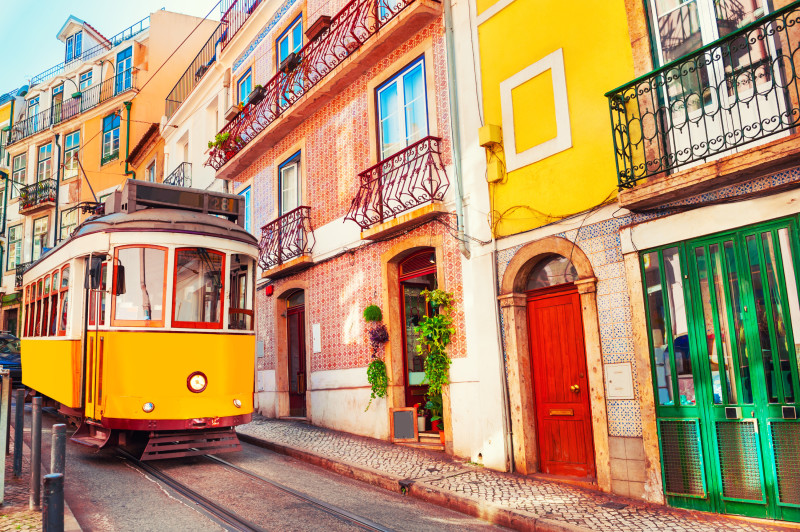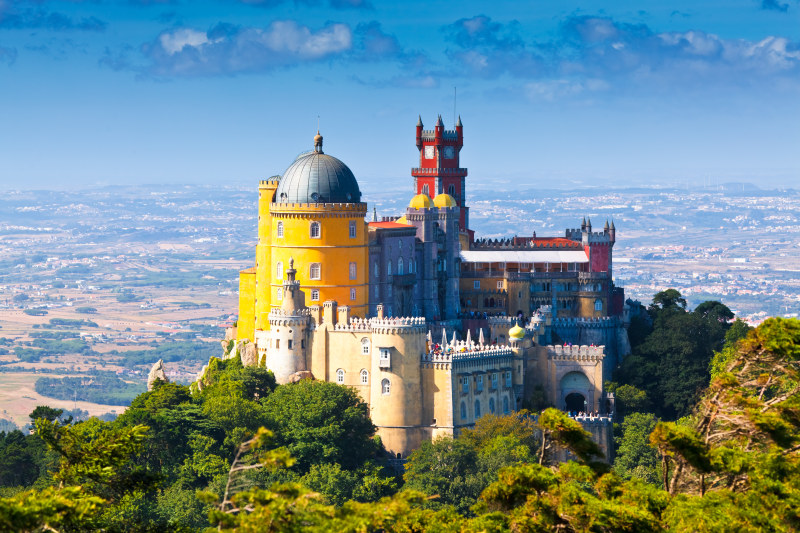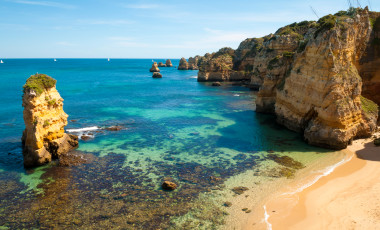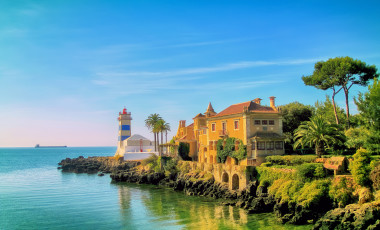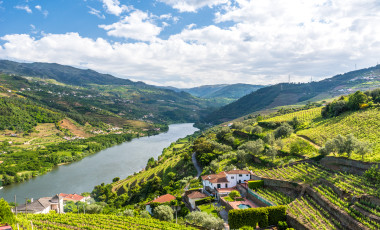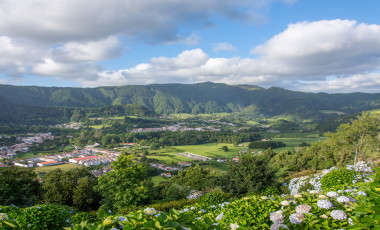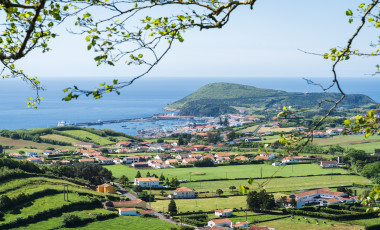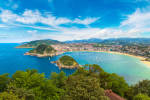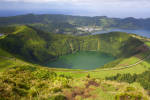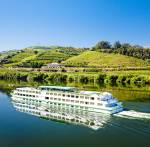Portugal through the seasons
From beautiful natural scenery ranging from granite cliffs, rolling hills and beautiful beaches to ancient stone carvings, serene vineyards, magnificent ruins, spiritual cathedrals and rustic, wholesome food, Portugal beckons travelers with a wealth of options!
The countryside is painted in the colors of springtime flowers from March to May, while September and October are perfect for vineyard visits and wine tasting. The summer months can get hot and crowded, while winters can get chilly and grey, especially in the north.
The best time to visit Portugal is during spring and early summer (April-May) and fall (September-October). Temperatures are pleasant and range from 55°F to 71°F (12°C to 22°C) in spring and from 59°F to 80°F (15°C to 27°C) in September and October. While there will be the occasional bout of rainfall, it is often not enough to throw your plans into disarray.
Best Time To Visit
overview
we recommend
- Soak in the thermal pools of Furnas without the summer crowds
- Admire the Gothic style architecture of the Jerónimos Monastery, a UNESCO World Heritage site located in Lisbon
overview
we recommend
- Brace yourself for a wildly good time at the Carnaval in Lisbon
overview
we recommend
- Set off on a day trip to Sintra from Lisbon and discover a fairytale town with royal palaces and lavish villas
- Head to one of Lisbon’s miradouros or viewpoints for unobstructed views of this stunning city
overview
we recommend
- Hike one of Algarve’s many coastal routes for some stunning views of the region’s sandstone cliffs and caves
- Explore the monuments of Evora, a UNESCO World Heritage Site
overview
we recommend
- Explore Alfama’s cobblestone streets and hidden cafes, a quaint neighborhood in Lisbon
- The intricate baroque craftsmanship of Igreja de São Francisco, Porto’s most famous church, has to be seen to be believed
overview
we recommend
- Hike, sail, and go on whale-watching expeditions at the Azores Islands
- Join the celebrations at the São João Festival in Porto, which includes some friendly head pounding with a plastic hammer
- Savor the flavors of grilled sardines at the Santo Antonio Festival in Lisbon.
overview
we recommend
- Head out to Galerias de Paris, Porto’s party street, for a night of food and fun
- Hop on an exciting Toboggan ride in Funchal
overview
we recommend
- Take a stroll down the Foz do Douro seafront promenade in Porto for unforgettable sunsets.
- Picture perfect beaches, adrenaline-pumping water activities, and a vibrant nightlife await you at Lagos.
overview
we recommend
- Lose yourself in a maze of streets and stairs at the UNESCO World Heritage-listed Ribeira District in Porto
- Explore the untouched beaches and laid back charm of Alentejo
- Catch spellbinding sunsets at Cabo de São Vicente in Algarve
overview
we recommend
- Go on a gastronomic tour in Porto
- Portugal’s wine country, Douro Valley, beckons with its breathtaking scenery and exquisite wine tastings
overview
we recommend
- Be moved by a powerful Fado musical performance at Lisbon.
overview
we recommend
- Huddle up at one of Lisbon’s many atmospheric wine bars
- Welcome the New Year with the biggest firework show in the world at Madeira Island
Seasons in Portugal
Summer in Portugal runs from June to August with day time temperatures in the range of 75ºF – 84ºF . The beaches are the warmest during this time of the year, and the coastal towns are packed. This is peak tourist season in Portugal.
Fall season starts towards the end of September and runs through November. Pleasant weather conditions stay through most of September and October. Beach resorts stay open however the crowds are significantly less at this time. The northern parts of the country experience some rain during this time. Temperatures move to the mid-60s by the end of November.
Winter sets in December and brings in cold temperatures and rain, particularly in the North. In the coastal cities of Algarve, expect temperatures between 50 – 60 ºF from January to March.
As Spring rolls in by March, temperatures inch up from the upper 50s to the mid-60s. By the end of May, temperatures are in the 70s, along with dry weather and clear skies, providing perfect conditions for sightseeing.
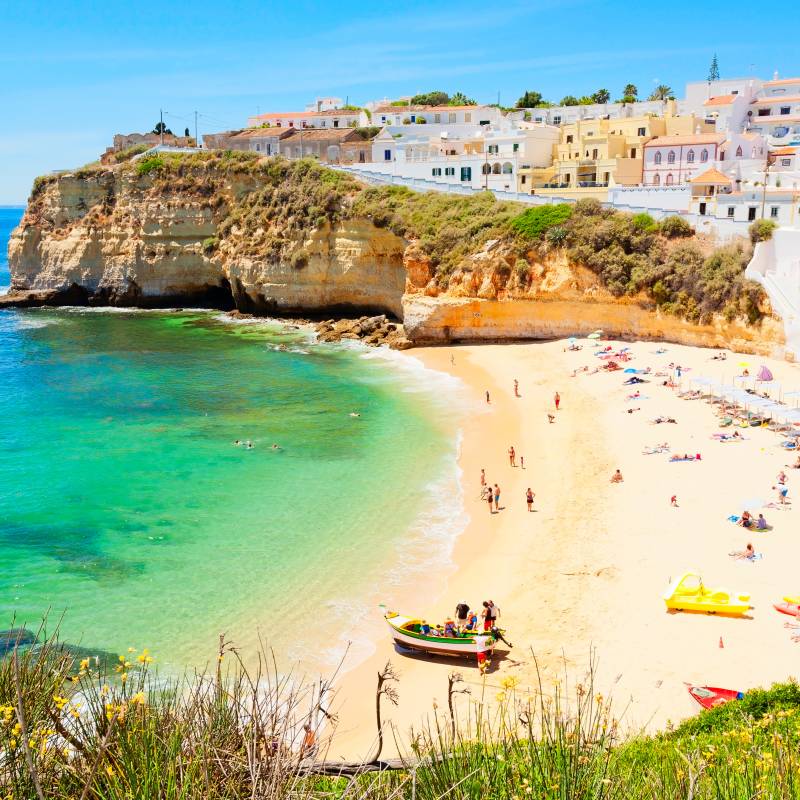
Best Time for Sightseeing
The best places to visit in Portugal can be be enjoyed to the fullest if you visit them at the ideal time recommended by our experts.
If the cities are what you want to explore, then the period from March-June and September and October are the best months to visit Portugal. With schools closed for vacation, July and August are the most popular months to visit Portugal. If the perfect seaside vacation is what you are looking for, then head to Portugal’s many popular beach towns between July – September when the waters are at the warmest. While the island of Madeira in Portugal is a year-round destination, the Azores islands are perfect during spring and fall when temperatures are pleasant with fewer crowds. The Douro Valley is at its most beautiful during spring (April to June) and fall season (September to November).

What to Pack
The dress code in Portugal is smart casuals. Lightweight cottons and linens will keep you comfortable if you are visiting Portugal during its sweltering summers. Of course, if you are heading to any of the beach towns during summer, sunscreen, sunglasses, and a hat are a must. With plenty of attractions to visit, any trip to Portugal involves a lot of walking. So, plan on packing a pair of comfortable walking shoes or hiking sandals. Nighttime lows during spring and autumn can be chilly, so it’s wise to bring along a light jacket, sweater, scarf or cardigan. Also, pack an umbrella or rain jacket for those sudden downpours.
While those coming from colder climes might not find Portugal’s winter cold, weather conditions can get quite chilly due to rain. Pack a leather or denim jacket for those cold days though you might want to pack a winter jacket if you are visiting central or northern parts of the country.
Discover Portugal with tailor-made itineraries and advice from our travel experts!

Popular Trips to Portugal

Delve into the history and culture of Portugal and Spain as you journey through quaint towns and vibrant cities on this customizable getaway. Start your vacation in Porto, a laidback Portuguese coastal city, before moving on to soak up the beauty of Lisbon and relax on the beaches of the Algarve region. While in Spain,…

Marvel at the historical and cultural treasures of the Iberian Peninsula on this combined tour of Portugal and Spain. Begin your journey with a guided tour of Lisbon’s most well-known landmarks. Immerse yourself in the soulful sounds of the Fado as you enjoy some authentic Portuguese delicacies. At your next stop – Lagos, in the…
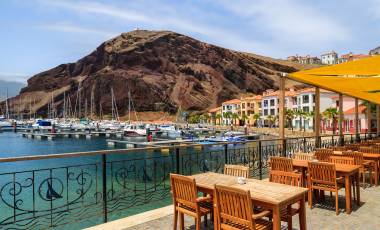
Experience the vibrant capital of Lisbon and the serenity of the scenic Madeira Islands on this Portugal vacation, which is an enchanting blend of culture and nature. Learn about the region’s history on a guided tour of the Portuguese capital before heading off to witness a soulful Fado music performance. Next, visit Sintra in the…
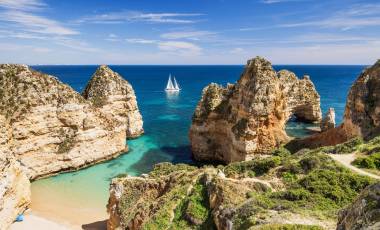
This journey from the North to the South of Portugal showcases the best natural, cultural and historical highlights of this fascinating country. Explore pretty Porto – its cobblestone alleys, charming cafes, interesting monuments, breathtaking viewpoints, and more. Take a romantic cruise on the Douro River and indulge in sublime wine tastings. Deep dive into the…
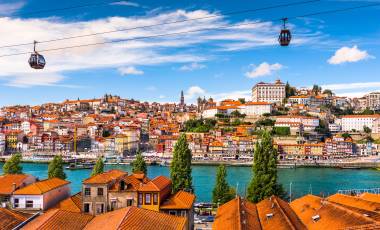
With its many city delights and spectacular natural attractions, picturesque Portugal is a treat for all your senses! Delight in some of the most stunning views of Ponta Delgada, including the Blue and Green Lakes, the Valley of Sete Cidades, and the crater lake at Lagoa do Fogo. Savor the flavors of Furnas – sip…
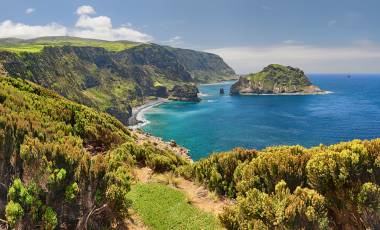
Welcome to the volcanic archipelago of Azores, where you will experience the unique landscape, architecture, wildlife sightings, and more. Start your journey at Ponta Delgada, and discover the sights, sounds, and history of the capital city on a personalized walking tour. Sail out into the waters off the islands and spot the giants of the…
Sorry, your search found no results.
Best Places To Visit
Travel Guide
From which currency to use when you visit Portugal to health information, tipping guides, getting around in the country and visas required, our Portugal travel guide is packed full of useful information to help you prepare for your luxury tour.
Things To Do
Portugal may be small in size but it is packed full of exciting things to do and see, from the castle of Sintra to the Azores, Lisbon’s street art and the Douro River Valley. Choose your favorites from our list of top ten!

